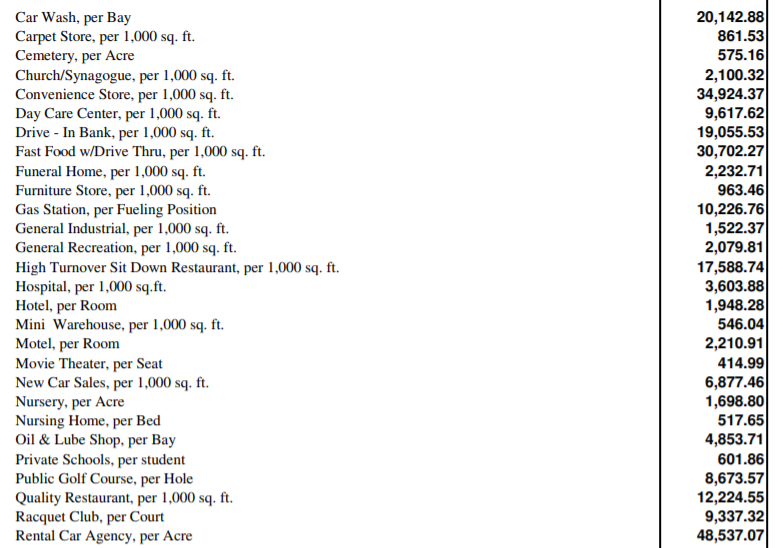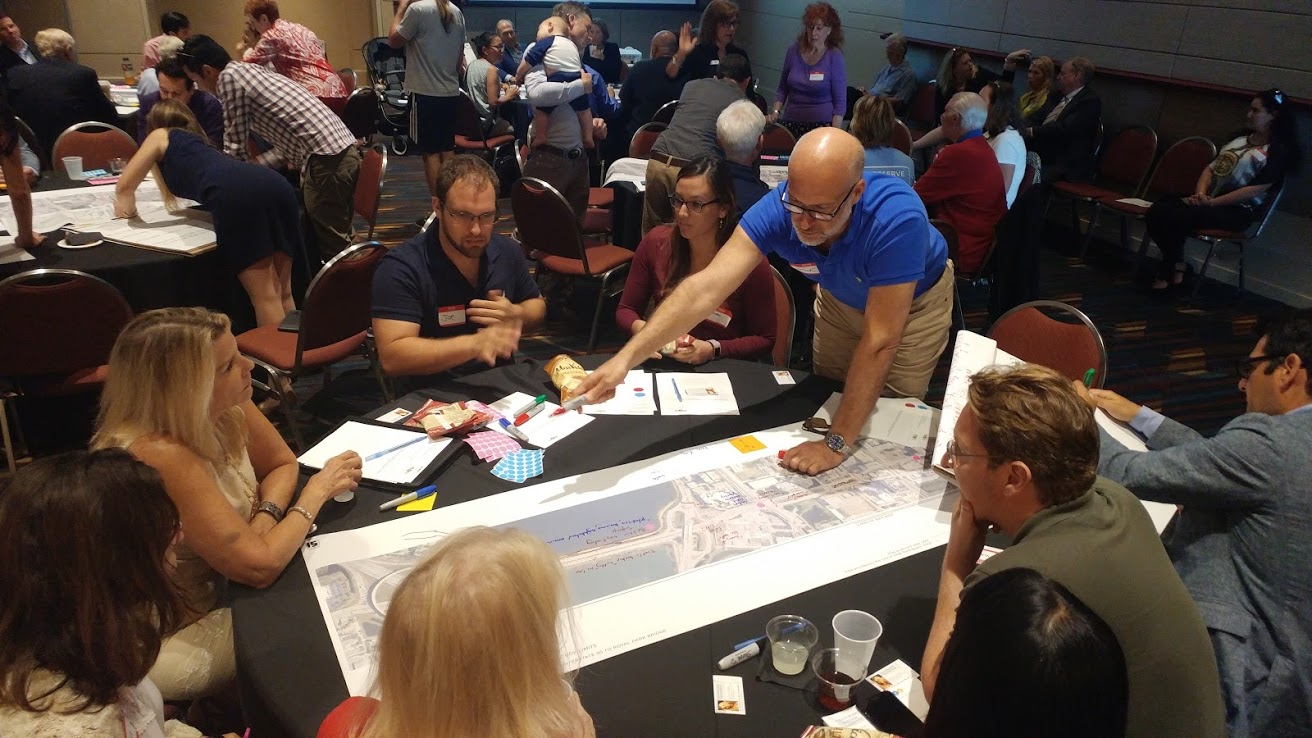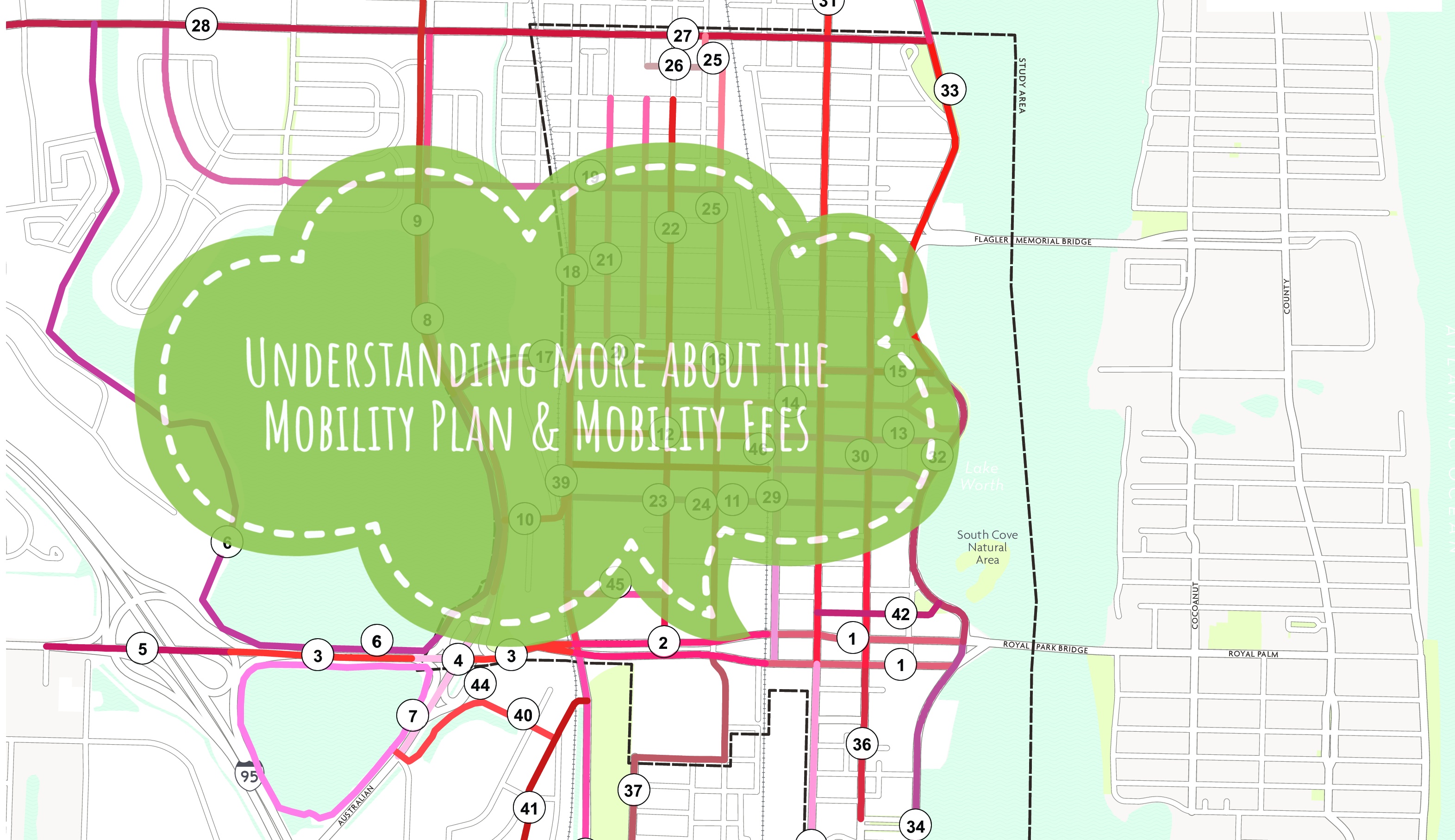You may have read my previous article on the Mobility Plan which outlines some of the highlights of the plan. This is a pretty technical issue, and I’ll admit that it took a while for me to wrap my head around the project. There is a lot of information going around about what the mobility plan is and what it isn’t. Some of it, according to the City, is simply wrong.
The West Palm Beach Downtown Mobility Plan is “framework of best practices that will guide the city’s decision making” a vision to “enhance how people and goods move through downtown”. Possibly more importantly, this is the first step in a process the City of West Palm Beach is initiating that is focused on changing to whom impact and mobility fees are paid.

The first time I heard about mobility and impact fees was when Jonathan Gladstone was building what is now the very cool Butcher Shop on 6th Street. Mr. Gladstone bought the former sea-plane hanger for $200,000 and worked for 2 years to find a tenant (Meat Market) and complete the build out. Before the County would grant a building permit they required the developer to pay an impact fee… of $164,000. This was a show-stopper.
The impact fee is a fee that the County charges new developments to pay for: Parks, Libraries, Public Buildings, Schools, Fire Rescue, Law Enforcement Patrol, and the big one Roads. The logic behind the impact fee is that it pays for the additional traffic that the new establishment will bring.
The county has a very specific fee schedule that covers every different building use and their estimation of how big an impact that use will have on traffic.

It is clear that each of these uses will cause some additional traffic, but the argument the city made is that if the development is within the City of West Palm Beach, and specifically our high density downtown area they shouldn’t have to pay for County roads.
Jonathan Gladstone did his own traffic impact study and came to an agreement after negotiations with the County to open the Butcher Shop for a fee of $33,000. Another developer, Nader Salour who built the apartment complex Loftin Place which is directly adjacent to the Butcher Shop didn’t have the same luck and ended up paying $1.6 million to the County.
In a recent email from West Palm Beach City Commissioner, Paula Ryan explains the faults of the County’s Impact Fee system further.
“The County currently has $23 million dollars in the bank from our developments, and they anticipate collecting another 18 million by 2020. Currently, $19 million is going to be used for an expansion of Haverhill Road, and Florida Mango. Neither of these are in the City. We have lots of things that we need to fix. Crosswalks, sidewalks, walkways, and we have things we want, expansion of the trolley system, better road way turn outs for trolleys, bus stops etc. We cannot use any of the large fees developers pay to fix our own infrastructure. The Florida Legislature, in 2011, gave local governments the option to charge what is called a Mobility Fee that would allow us to use funds to make the above upgrades and improvements.”
The City of West Palm Beach set out to create a way that developers in West Palm Beach can, instead of paying the County for roads out West, can put their dollars to work to enhance mobility in West Palm Beach through a Mobility Fee.

Nue Urban Concepts a explains the value of a mobility plan & mobility fees to a community.
“The enactment of Mobility Fees, based on an adopted Mobility Plan, provides a funding source that repurposes revenues away from funding road capacity to one that funds multi-modal improvements that encourages walking, jogging, bicycling, golf carts, car and bicycle sharing and new and emerging technology that provide personal mobility. Mobility Fees are intended to replace road impact fees that fund automobile capacity. A Mobility Fee allows a community to fund mobility and accessibility improvements and services that can reduced dependence on personal motor vehicles, enhance livability, increase tax revenues and attract economic development.”
Commissioner Ryan continues her email: “This is what the Mobility Plan does, it works to address all the States requirements for implementation of a fee. The real work now begins and continues into the future. We have identified just about every stretch of road in the Downtowns for areas of concern. We have estimated the amount of asphalt, trees, design, planning etc and estimated costs. The details of any plan will still need to come back before the City Commissioner, the stakeholders will be engaged, and a solution will be identified and a schedule will be established with a financial budget.”
To facilitate this, the City of West Palm Beach contracted Alta Planning + Design consultants to develop a Mobility Plan. The project was kicked off with a charrette to get local’s opinions on what the City can do to help solve the traffic issues on Okeechobee BLVD.

After months of work, the Mobility Plan was just released. The City Commission is voting to adopt the plan on Monday City Commission meeting.
Understandably, Palm Beach County is not a big fan of losing all that Impact Fee income that they are getting from their capital city. Various other groups have targeted this proposal. The Palm Beach Civic Association has targeted the Mobility Plan in this video which claims this proposal will “cause gridlock in West Palm Beach”. The folks at FixFlagler, concerned that this is a resurgence of “Flagler Shore” have also rallied their supporters to fight this proposal.
The concern is not completely unreasonable, as changes to Flagler which “Close one side of the median for walking and biking only. Convert the other side to two-way traffic with on-street parking” is identified as a “quick-build” project. Although the

Commissioner Ryan addresses the concerns that residents have over some of the projects that are being proposed: “We are not asking anyone to change their mode of travel. If you only drive, you will have better roads to drive on, if you walk, you will have safer sidewalks to walk on, it you ride the train, you will have access to the trolley to take you to your final destination. If you take the bus, you will have a bus shelter that is both clean, attractive and wifi connected. We want to make upgrade a strategy for each condition and the community will be engaged in the implementation of any strategy. Please support our efforts to establish a better community, safer streets and less congestion.”
The Mayor has also re-iterated that approving the mobility plan is not approving any specific projects. This is not about Flagler Shore and Flagler Shore is not on the agenda. To answer additional questions the City tweeted out the answers to any questions that you might have.
On Monday, the City Commission will consider the City's Mobility Plan, a framework of best practices that will guide the City's decision making re: its future mobility network. What is the plan? What are its goals? We answer the most frequently asked questions, here: -> pic.twitter.com/CAbTysXtg3
— City of West Palm Beach (@westpalmbch) May 18, 2018
One of the key questions the city answers: Is the Mobility Plan a commitment to fund and build projects?
Answer: No. It is not an approval of projects, funding or fees. If the City were to move forward with individual projects or initiatives that are recommended in the study, the projects and initiatives would go individually before the City Commission for a vote at a later date with opportunities for public comment and input. The mobility plan outlines specific actions organized into short-, medium-, and long-term stepping stones that will guide the community toward achieving the type of city West Palm Beach wants to be.
So this is what I understand the choice the commissioners have on Monday. Do they choose to do nothing and continue to have investors in our city send their dollars to pay for larger roads and the sprawl that the County is creating out West. Or do we pass a Mobility Plan which will enable the city can use some of this money to solve problems that we have in our city, which will directly impact the investors, and most importantly the residents of the City of West Palm Beach?
